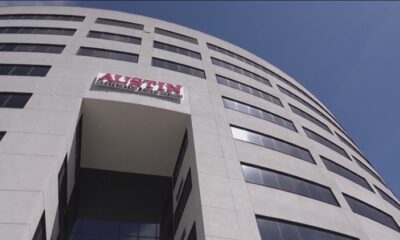Education
Austin ISD Faces Backlash Over School Closures and Zoning Changes

The Austin Independent School District (AISD) is facing significant backlash from parents following its announcement to close schools and redraw attendance zone lines. This decision is expected to impact thousands of families whose children will be reassigned to different schools, igniting widespread anger and frustration within the community.
Many parents have voiced their concerns about the implications of these changes. One parent noted on social media, “We were formerly Zilker and now proposed to be rezoned to Galindo Elementary. I can’t find anything about Galindo other than poor ratings.” At Zilker, a remarkable 92% of students are reading proficiently, compared to just 59% at Galindo. Another parent highlighted their recent home purchase, stating, “We bought this house last summer in part because it was zoned to one of the best elementary schools.”
The reassignments are striking a nerve, particularly in cases where students from Barrington Elementary are affected. While some will be moved to the higher-performing Guerrero Thompson, which boasts a 76% reading proficiency rate, others will be reassigned to Wooldridge Elementary, where only 42% of students read at grade level.
This situation reflects a broader trend seen in numerous districts across the United States, where school closures and zoning changes lead to disparities in educational quality. Parents feel that their children’s education is being determined by where they live, creating an environment where families are compelled to purchase homes in expensive attendance zones to ensure access to high-quality education.
A potential solution can be drawn from the experiences of New Orleans, which underwent a complete overhaul of its school system following Hurricane Katrina. The city abolished traditional school assignments and attendance zones, allowing families to apply to any school through a centralized enrollment process. This model has resulted in increased student performance, graduation rates, and college attendance. Schools that are oversubscribed conduct lotteries to manage admissions, while still preserving geographic priorities for local residents.
Austin ISD could consider implementing similar approaches. For instance, guaranteeing that every child has a fair opportunity to enroll at one of the five closest elementary schools could help alleviate some of the current tensions. Alternatively, schools might reserve a portion of their seats for students from outside the designated zones, fostering a more equitable system.
The existing system has drawn comparisons to the discriminatory practices of redlining that marked the 1930s in the United States. Historical maps used by the federal government designated certain neighborhoods as “desirable” while labeling others as “hazardous.” Today, similar boundaries persist in public school attendance zones. For instance, Manor Road in the Cherrywood neighborhood marks a division in access to quality education. Children living south of this line are assigned to Campbell Elementary, a school with a D rating, while those to the north attend Maplewood Elementary, which has an A rating and 85% reading proficiency.
Parents at Maplewood are concerned about the proposed zoning changes that would require their children to cross Manor Boulevard to attend Campbell, should Maplewood close. The current system perpetuates inequalities that have historical roots, and Austin ISD trustees are urged to reconsider their approach.
In light of these developments, advocates like Tim DeRoche, founder and president of Available to All, call for a rethinking of student assignment maps. DeRoche emphasizes the need for a system that provides every child with an equal chance at quality education, regardless of their residential address.
As the community continues to express its discontent, the future of AISD’s school closures and zoning changes remains uncertain. Parents, educators, and policymakers alike will need to engage in meaningful dialogue to address these critical issues and seek solutions that prioritize equitable access to education for all students.
-

 Technology4 months ago
Technology4 months agoDiscover the Top 10 Calorie Counting Apps of 2025
-

 Health2 months ago
Health2 months agoBella Hadid Shares Health Update After Treatment for Lyme Disease
-

 Health3 months ago
Health3 months agoErin Bates Shares Recovery Update Following Sepsis Complications
-

 Technology3 weeks ago
Technology3 weeks agoDiscover 2025’s Top GPUs for Exceptional 4K Gaming Performance
-

 Technology4 months ago
Technology4 months agoDiscover How to Reverse Image Search Using ChatGPT Effortlessly
-

 Technology2 months ago
Technology2 months agoElectric Moto Influencer Surronster Arrested in Tijuana
-

 Technology4 months ago
Technology4 months agoMeta Initiates $60B AI Data Center Expansion, Starting in Ohio
-

 Technology4 months ago
Technology4 months agoRecovering a Suspended TikTok Account: A Step-by-Step Guide
-

 Health4 months ago
Health4 months agoTested: Rab Firewall Mountain Jacket Survives Harsh Conditions
-

 Lifestyle4 months ago
Lifestyle4 months agoBelton Family Reunites After Daughter Survives Hill Country Floods
-

 Technology3 months ago
Technology3 months agoUncovering the Top Five Most Challenging Motorcycles to Ride
-

 Technology4 weeks ago
Technology4 weeks agoDiscover the Best Wireless Earbuds for Every Lifestyle












